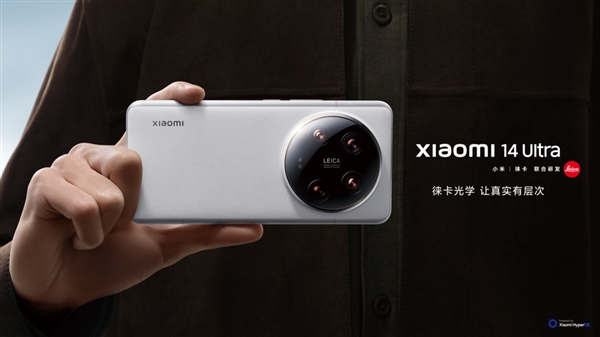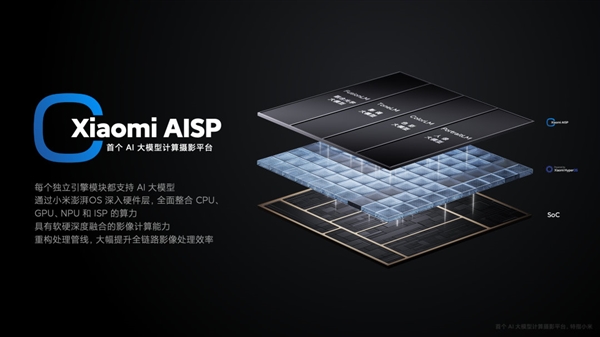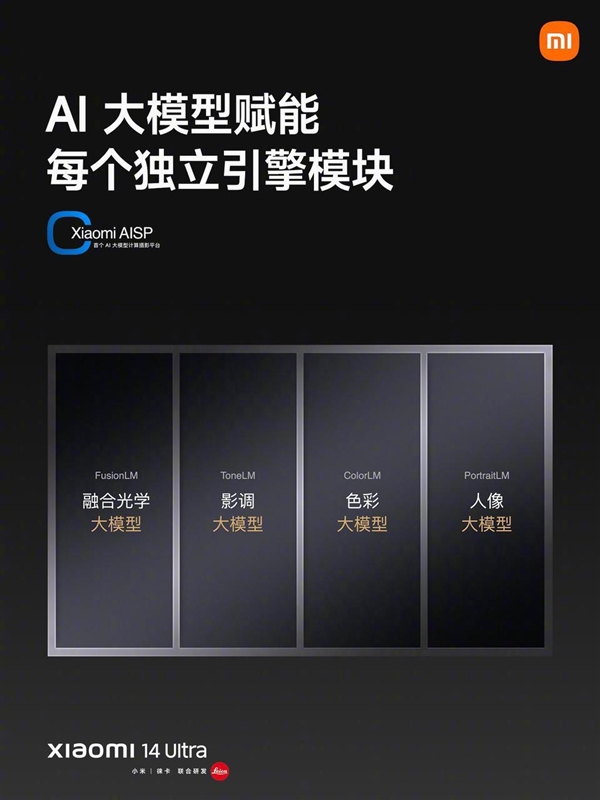
News on March 13, in February this year, the king of Leica imaging - Xiaomi Mi 14 Ultra was officially released. This is the most powerful imaging flagship in Xiaomi's history. It is not only equipped with the new Summilux all-star four-camera, but also equipped with AI for the first time. Model computational photography platform Xiaomi AISP.
Xiaomi AISP is a new upgrade of Xiaomi’s imaging brain. Today, Xiaomi officially issued an article to popularize Xiaomi AISP in detail.

Xiaomi stated that the Xiaomi AISP platform used in the 14 Ultra launched this time is based on the Stable Diffusion model (image processing) through innovative thinking on effects, computing power, and generation. Basic AI large model in the field) development.

Xiaomi splits Xiaomi AISP into four types of large models, namely integrated optical large model, tone large model, color large model and portrait large model, and each model has It has undergone miniaturization, heterogeneous parallelization and other accelerated processing to meet the objective needs of mobile phone end-side and camera functions.
Xiaomi applied AIGC technology to the field of computational photography for the first time, bringing images that can accurately predict "what you see" and "what you want to show", solving the problem of long shooting distances of the telephoto function in the camera. The film effect is blurry and lacks authenticity.

At the same time, the Stable Diffusion large model is used to generate the AI Super Zoom (Ultra Zoom) function of the image.
Thanks to Xiaomi AISP, Xiaomi Mi 14 Ultra has a new fusion optical large model (FusionLM) algorithm, which breaks the conventional logic of cutting first and then splicing.
It is understood that this large model retains the complete original light intensity information to the maximum extent and achieves linear calibration of the original light intensity. When synthesizing a picture, it breaks through the unnatural and unsmooth transition of the old synthesis technology. slippery problem.
In addition, in order to make the light and shadow effect of the picture more realistic, the light ratio is closer to the effect of the human eye. Xiaomi uses the Tone Large Model (ToneLM) to train the Tone mapping algorithm.
This model will automatically learn how to adjust the brightness and contrast of the image based on Ultra Raw ultra-high dynamic range linear data, improve the tone effect, and can handle more complex scenes than the traditional Tone mapping algorithm.
The last is the large portrait model, which includes three main modules: "portrait semantics", "portrait blur" and "high-fidelity portrait intelligent beauty".
Provides an algorithm model that imitates the way of thinking of photography masters. Through the artistic processing of the algorithm, the light and shadow are more three-dimensional, the depth of field is more natural, and the skin details and skin texture are more realistic.
The above is the detailed content of Leica King of Imaging Xiaomi Popular Science 14 Ultra's first AI large model computational photography. For more information, please follow other related articles on the PHP Chinese website!




